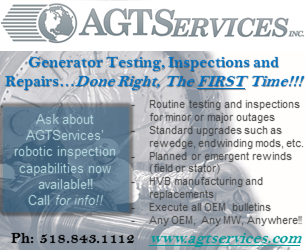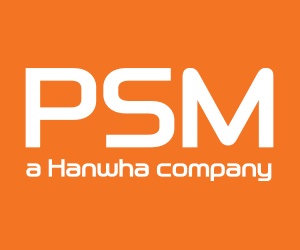If there was a positive outcome of the pandemic for power O&M professionals it might be the emergence of the webinar as an indispensable training tool. Power Users relied on the virtual medium to conduct the annual meetings of its various user groups for a year or two until Covid subsided. Its HRSG Forum continues to present technical webinars periodically to keep its vibrant global membership informed.
OEMs and service providers also are increasing their use of webinars to help customers grow in their jobs and make better decisions. GE Vernova has done good job in this regard, the editors believe, with its Gas Power Resources library. It allows you to search by type of resource (articles, white papers, webinars, etc—each served by a single-click button on the site’s home page), product of interest (gas turbine, steam turbine, generator, etc), topic (asset management, cybersecurity, outage planning, etc), and via a keyword search.
What follows are thumbnails of webinars presented by GE Gas Power engineers during late 2023 that may be of interest to CCJ readers. The editors listened to them online and then, to confirm facts, went to the website and found the recorded webinars quickly by clicking on “webinars” and “gas turbines” (or “steam turbines”). Couldn’t be easier to get useful information. Take a test drive.
Managing your F-class rotor: Mitigating risk and enhancing value with Penny Leahy, F-rotor product line leader; Srinivas Ravi, principal rotor engineer; and Frederic Sbaffo, senior engineer—fleet management.
Learn about proper planning throughout your rotor’s lifetime and what you can do to run your equipment to its highest potential. Plus, explore the benefits of preventive maintenance to avoid serious issues—such as corrosion.
Preparing for the unexpected: Outage planning for steam turbines with Matt Foreman, ST platform leader; and Mark Kowalczyk, global repairs leader.
Focuses on how GE Verona can help you plan and prepare for any scenario that might be encountered in the next three to five years. Learn what goes into putting together a solid plan for a successful outage, and why getting started sooner is always better than later.
Generator exchange-rotor program is designed to help users ensure routine maintenance doesn’t extend outages beyond their planned durations. Chad Snyder, global segment leader for upgrades of generators, steam turbines, and HRSGs is the session leader.
He leads a discussion on how a generator rotor exchange could help you reduce risk and valuable time during both planned and forced outages. Also, how exchange rotors can be enhanced to accommodate your particular cyclic-duty plant operations to ensure capacity, availability, and reliability.
Outages: Lessons learned and continuous improvement reviews the unprecedented challenges experienced by GE Vernova and its customers during the pandemic and how the OEM and users collaborated for success.
Amir Hafzalla, president of FieldCore; Eric Gray, president of GE Gas Power Americas; and Mark Albenze, president of GE Gas Power Services, explain how remote technologies and innovative changes are supporting the OEM in its efforts to successfully deal with today’s challenges. The executives then review the processes developed in partnership with users to enhance the outage experience. Finally, they present real-world examples of lean practices being implemented company-wide and the impact they have had on outage results.
The editors rated as most valuable to owner/operators GE Vernova’s mid-October webinar, Freeze protection considerations for gas turbine power plants operating in regions subjected to ambient temperatures as low as minus 50F. You might know a thing or two about freeze protection, but is that enough to keep your plant out of harm’s way?
A panel of three consulting engineers from the company’s product services group—Alston Scipio, PE, Will McEntaggart, and Ronald Wifling—review solutions you may have forgotten or never were aware of in the first place. The presentations/discussions were chaired by Tom Freeman, chief customer consultant, well known to owner/operators of GE frame engines.
Gas turbines and combined-cycle plants were the focal point of the 90-min webinar. Systems and equipment outside the plant fence/boundary were not part of the discussion. The session began with safety moment to get attendees thinking about such things as possible impacts of off-normal weather conditions, the importance of proper PPE, potential dangers of slippery ladders and steps, being aware of the consequences of icing conditions—such as stranded workers, falling ice, etc.
Stressors also were injected into the discussion—including how to deal with intermittent cold weather, ice rain/sleet, freezing fog, less than resilient grid connections, supply limitations for fuel and other fluids, long durations between cold snaps such that you drop your guard regarding freeze effects, etc.
Plant configuration (indoor/outdoor) and site location are important considerations for the analytical effort required. They influence ambient max/min temperatures, potential wind/snow/ice impacts of elevation, water availability, emissions limits, plant emergency plans, etc.
A significant portion of the webinar is dedicated to mechanical systems and their vulnerabilities. Discussion here covers air inlet systems, cooling-water considerations, power augmentation systems and their layup, hydraulic oil systems for steam and gas turbines, gas fuel system and pressure, and liquid fuel system—among others.
Next comes instrumentation considerations, both for exhaust systems and instrument air. Discussion continues with air-operated valves, then operability, with protection of the air-inlet system against icing called out along with assuring proper combustion.
A valuable adjunct to the discussion is the list of applicable O&M manuals (GEKs) and technical information letters (TILs) provided. Read them to advance in your job. Plus, there’s a comprehensive winterization checklist to refer to so you don’t forget anything.









